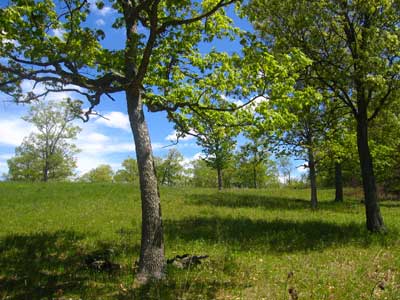Selecting a Site
What sites are best for oak?

Many landowners figure out the hard way where on their property oaks will do well.
The best sites for establishing and maintaining oaks are south- or west-facing slopes or along ridge tops, where soils are likely to be well-drained and sandier.
Sites where soils are richer and heavier, such as north- and east-facing slopes or spots lower in the landscape, are typically poor sites for establishing or maintaining oaks. In these sites, oaks will likely face fierce competition from tree species like maples and basswood.
Cutting these species to reduce competition with oak can help, but don’t force it. If competition from maples, basswood, or other non-oak species is too much to overcome, go with them.
Richer sites are very capable of producing quality hardwoods, but you may have to settle for something other than oak.
Other considerations
Other factors on the land can also make oaks easier to establish and maintain. Removing cattle from old pastures with large oaks, for example, can give developing oak seedlings a head start on their plant competitors.
However, keep an eye on the brush in these pastures that cattle failed to eat. Brush will compete strongly with developing oak seedlings.
Another factor to consider is the age of your trees. If 80- to 90-year-old red oaks are present, they will re-sprout vigorously when cut, creating the next woods. Oaks more than 120 years old, on the other hand, are less likely to re-sprout and thus aren’t a dependable source of regeneration.
